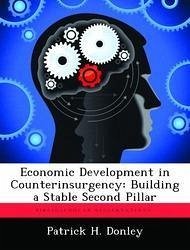
Border Interdiction in Counterinsurgency: A Look at Algeria, Rhodesia, and Iraq
Versandkostenfrei!
Versandfertig in über 4 Wochen
53,99 €
inkl. MwSt.

PAYBACK Punkte
27 °P sammeln!
One of the tools available to the counterinsurgent when devising a campaign is the interdiction of the insurgent's movement of men, materiel, and money at the border. This thesis examined three case studies of border interdiction in insurgency: the French in Algeria from 1954 to1962, the Rhodesian experience from 1965 to1980, and the current Coalition experience in Iraq. In 1956, to counter insurgent infiltration of fighters and weapons, the French built the Morice Line, a barricade system built around an electronically charged fence. The Morice Line was remarkably effective in stopping insurg...
One of the tools available to the counterinsurgent when devising a campaign is the interdiction of the insurgent's movement of men, materiel, and money at the border. This thesis examined three case studies of border interdiction in insurgency: the French in Algeria from 1954 to1962, the Rhodesian experience from 1965 to1980, and the current Coalition experience in Iraq. In 1956, to counter insurgent infiltration of fighters and weapons, the French built the Morice Line, a barricade system built around an electronically charged fence. The Morice Line was remarkably effective in stopping insurgent infiltration. While the Rhodesians attempted similar border fortifications, they lacked the resources to successfully employ such means. They instead found the employment of highly mobile teams to track and kill insurgents more successful, given their resource constraints. The US-led Coalition in Iraq, after a slow start, employed small advisory teams in support of Iraqi security forces working from border forts to secure Iraq's borders. The three case studies show that border interdiction is a relatively inexpensive component of a counterinsurgency campaign, but can be a vital component of that campaign if the counterinsurgent interdicts the right target (manpower, weapons, or funding).














